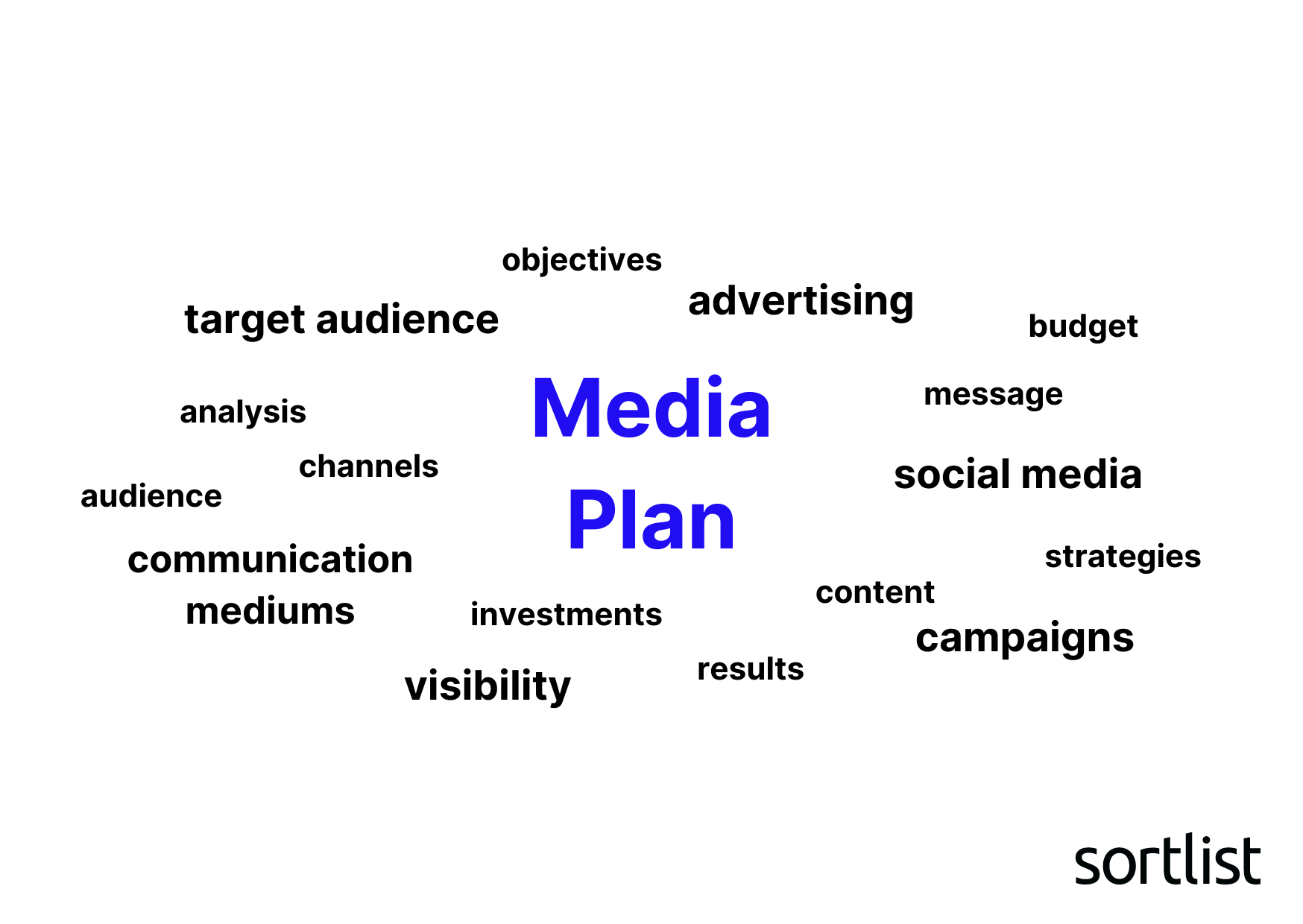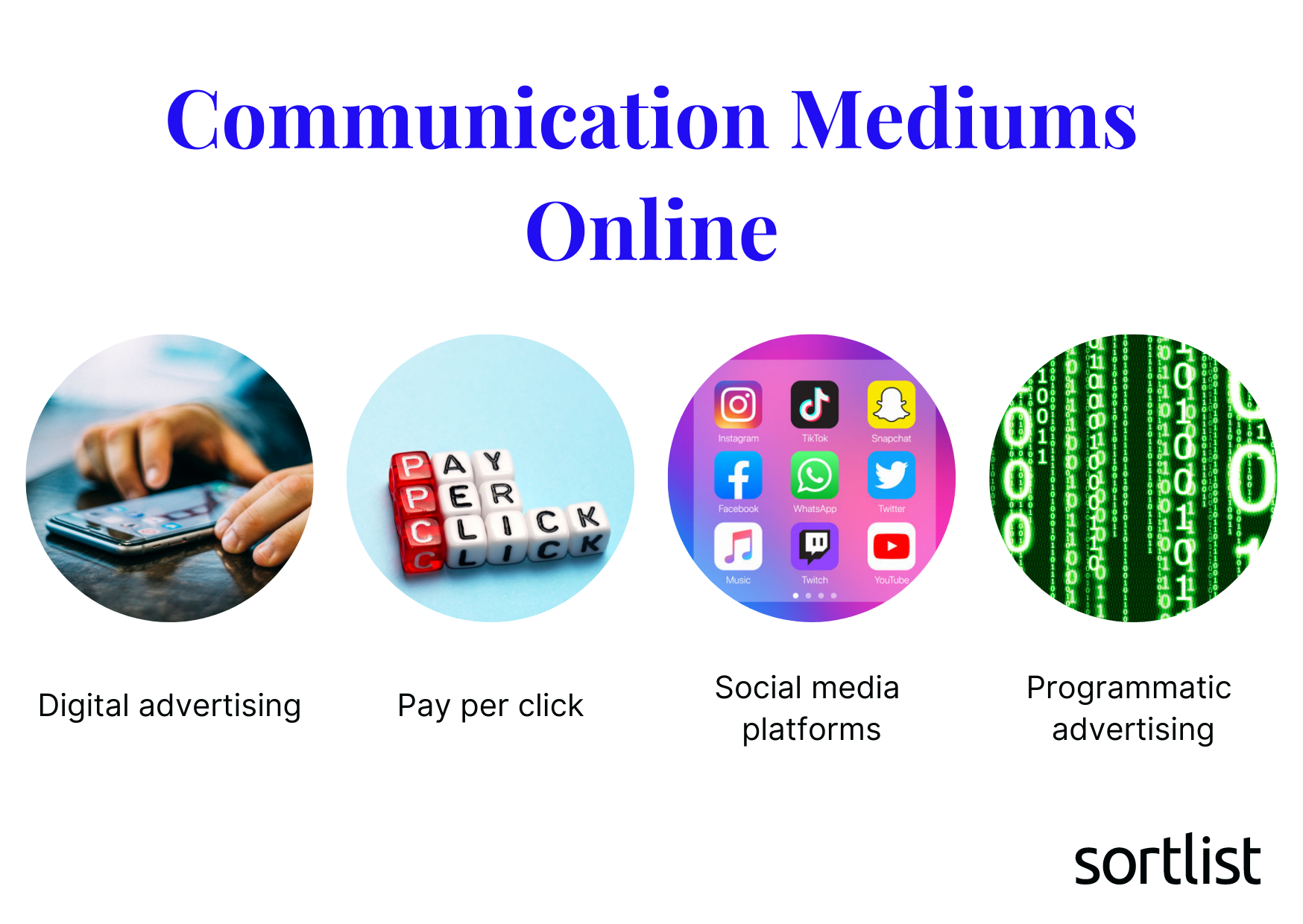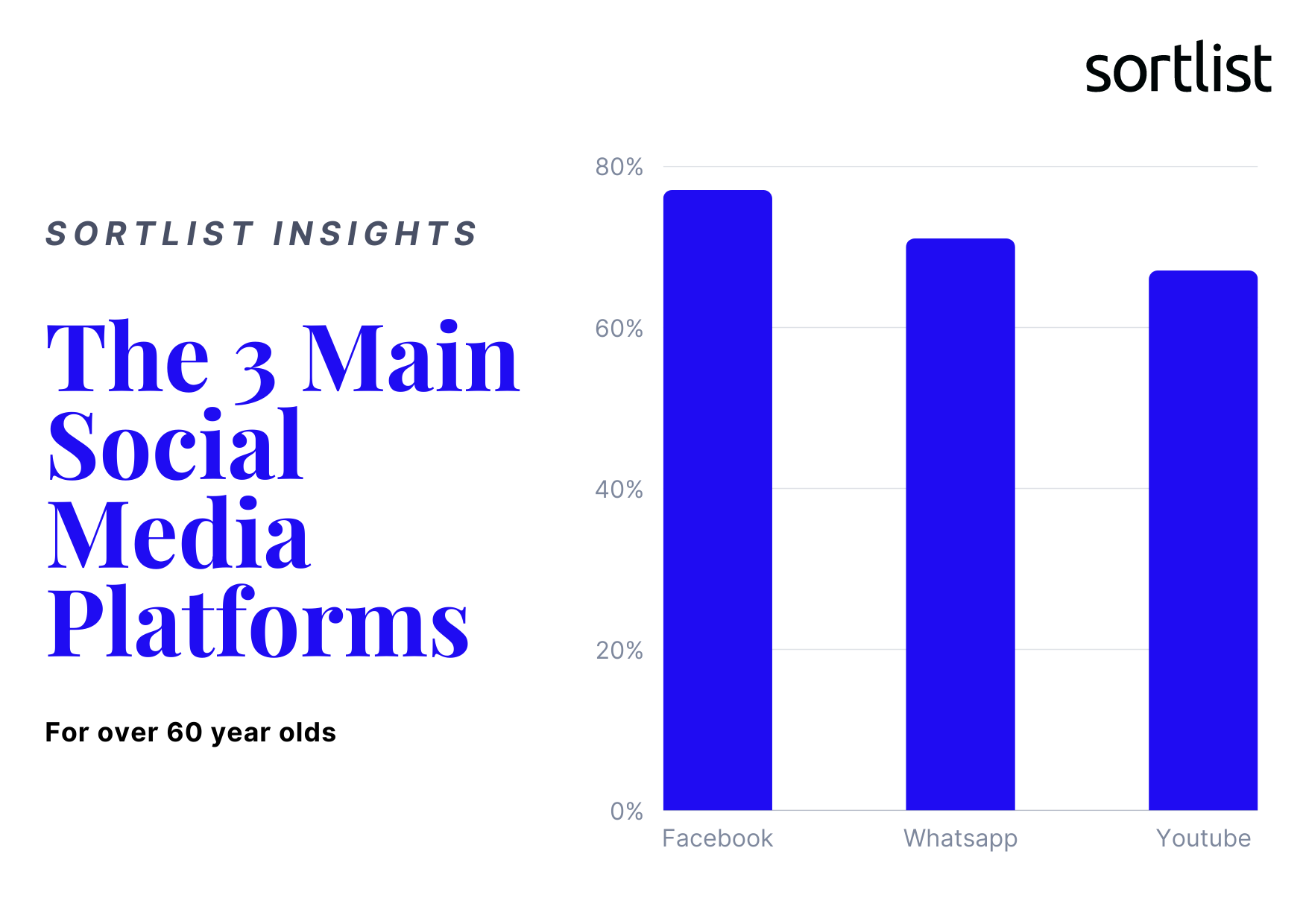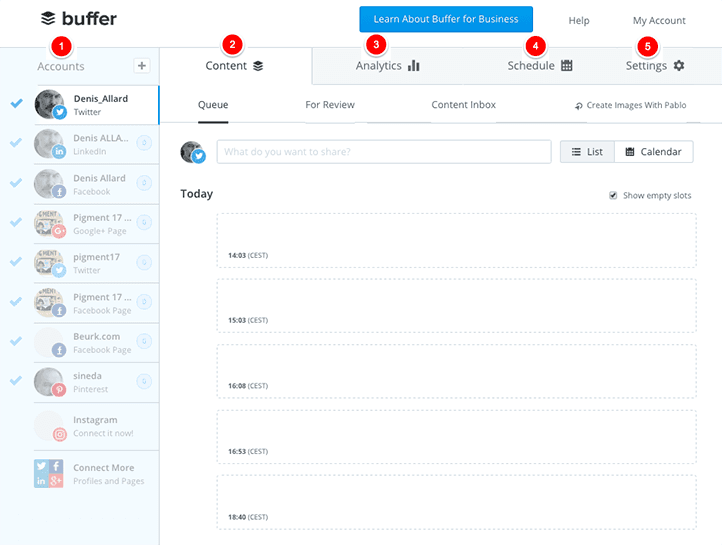
9 Simple Steps to Create Your Media Plan
Last update: 23 August 2023 at 02:01 pm
What’s the point of launching a campaign if you can’t reach your target audience? Having a media plan is fundamental for the success of your marketing campaigns (and therefore for your business).
As an advertiser, the ideal is to select the most appropriate media in order to increase your visibility in the market. And for that, you need to have a plan!
But with a thousand media options, it can be overwhelming to know where to start. Which media best fits my audience?
If what you need is a guide to making a good media plan, here’s a step-by-step guide to a successful media plan.
What is a Media Plan?
A media plan refers to the strategic planning of communication channels to transmit advertising messages of a product or service, or in general, a business or brand.

Starting with a well-structured media plan can help your company save money in the long run – ensuring that everything you buy is working toward your marketing objectives.
Here are the steps to follow when creating a media plan:
How to Make a Media Plan in 9 Simple Steps
1. Identify the Target Audience
This is the first step in making a media plan, i.e., the advertiser must know who he is targeting and to who he is trying to communicate. To do this, answer the following questions:
- How old are they?
- What gender is the majority?
- Where are they located?
- What do they have in common?
2. Study the Market
Once you have identified your target audience, it’s time to conduct a market analysis. This will allow you to better understand the behavior of your audience.
To do this, ask yourself which platform would be best to reach your target audience. If your target mostly uses the Internet or if, on the contrary, their free time is spent on television or other physical media.
Do the people you want to target read magazines or newspapers, and if so, which ones do they read? This will allow you to know which channels are the most profitable to maximize the reach of advertising campaigns.
3. Choose the Right Media
Marketers can choose from a wide variety of online and offline channels.

Different channels for different audiences
These aspects are often linked. For example, age affects the channels where an audience is “found”: young people are more likely to be found on social networks, while those over 60 are less likely to be found on digital platforms and more likely to be found on physical media.
Even these groups are subdivided – within the youth group, for example, the social networks used vary greatly according to age.
Among teenagers, in recent years TikTok has risen to the head of the queue. With 20-somethings it’s all Instagram, while Facebook remains popular among millennials who are over 30.

The use of social networks in 2020-2021
The pandemic changed our routine and habits. We find ourselves cooped up at home, sometimes alone or away from our loved ones.
Social networks have been for many a solution to maintain a semblance of normal life and stay in touch with our loved ones.
That’s why Sortlist conducted a survey on social media use during the pandemic. We interviewed 500 people under 35 and 490 people over 60 in Spain, Germany, France, Belgium and the Netherlands.

More than three-quarters (77%) of those aged 60+ revealed that they were active on Facebook, making it the most used social media platform in their age group.
In second place is WhatsApp, at 71%, and in third place YouTube, at 67%. The Covid-19 pandemic has had intergenerational shifts in our relationships with online social tools.
Pinterest or TikTok?
Following the line of social networks, almost 80% of Pinterest users are women, with 38% of its audience between 50 and 64 years of age.

For an advertising campaign targeting women on the verge of retirement, should you consider this tool?
As you might expect, each of these channels needs a different plan as the advertising message (and medium) will be different. TikTok and Instagram are both social networks – but they’re not worth the same for your campaign.
They are two very different formats: with different content and a different audience. It is not a matter of adapting the message to the audience of the media, but what is important is that you choose the media that best suits your message.
And it’s the same with physical and TV media. Those platforms are not homogeneous either. We already know that people who watch soap operas are probably different from those who watch soccer.
If you really want to reach your ideal customer, your media plan not only has to look for the most appropriate channels, but also take into account how those channels can vary.
It is not about adapting the message to the media audience, but the important thing is to choose the media that best suits your message.
Even if the formats are the same, your target is not necessarily the same. Consumer analysis must be taken into account in order to effectively reach that target: something that could determine or ruin your media plan and strategy from the very beginning.
Thanks to research and understanding you will have information about what your competitors are doing, what channels are not meeting your objectives, or what others are not being considered and have great potential.
Do you |
Discover the most relevant agencies for your project based on your own specific requirements.
Find an agency?4. Set Objectives
To establish the marketing objectives you want to achieve with your campaigns, you must ask yourself: What do you want to achieve by targeting these media? Are you looking for branding? Are you trying to increase sales? Are you trying to build customer loyalty?
Outlining your plan, and how it fits in with the overall objectives of both your marketing team and your company means you can easily measure whether or not your advertising strategy is really working.
It’s fine if a lot of people see your ad, but if you’re not reaching your outlined objective, you’re failing the campaign.
Setting realistic goals when creating your media plan will help keep the project on track – and ensure you’re spending your budget well.
Also, you can share them with the agency providing the ad space, to decide whether or not this channel is compatible with your needs.
5. Plan the Strategy
Now that you have established your objectives, you can start planning your strategy.
To increase the effectiveness of the advertising, you must make sure that the ad is visible at the right time and in the right place. In this way, you will increase the chances of campaign conversions.
A message that falls on deaf ears is costly in the end.
Your plan should contain information about the channel on which you want to buy advertising space, the type of advertising you want to transmit, and the publication schedule.
The details in this type of plan are very important, so don’t skimp on spending time researching and negotiating. Make sure you choose the most appropriate medium for your objectives based on data and statistics.
This will help you create a strategy that contains all the information you need to run a successful campaign.
Keep all the data to help you create a media buying history that you can refer to if necessary.
In addition, collecting all of this data will help you save time and money going forward and of course, all of these documents will help you in the execution of the strategy throughout the year.
How to Use ‘Media Buying’ to Boost Your Business
Countless hours are spent trying to create original advertising. However, no matter how creative your ads are, if they don’t reach the right audience, then its potential to attract customers would be wasted. With media buying, you can make the advertisement more effective by showing it to your target audience. Let’s dive deeper into what […]
6. Determine the Budget
The first thing that must be clear is that the purchase of advertising media is an investment to be taken into account in the marketing budget.
The most effective thing to do is to learn how to estimate this expense in order to optimize your budget better and better.
Costs vary depending on the type of media you have selected. Taking into account the combination of media to be used and the impact you want to achieve with your campaign, determine the appropriate budget to achieve the outlined objective.
7. Put the Media Plan into Action
Now that you have a detailed strategy and budget, you must be able to implement it. The first step is to start contacting the media outlets you have identified and negotiate with them for their buying rates.
Fix in your mind the schedule and budget on which to move during negotiations. Make sure you’re aware of the company’s best rates, even those of your own competitors.
And don’t be shy about asking for volume discounts.
As the space you’ve purchased is being used, don’t forget to track the results and evaluate how the strategy is working.
If during the execution of the strategy you detect that you are not achieving your goals, don’t be afraid to make adjustments.
8. Launch
This is perhaps the most exciting step, since at this stage your ad will finally be published. However, this does not mean that the job is finished.
You will have to supervise that it is being published according to what was agreed with the media agency and that we are achieving the objectives set.
9. Measuring Results
This is the most important step as it will help us to learn and correct mistakes. It will also allow us to check if we have achieved the marketing objectives defined in the strategy phase.
If things have worked as expected, you can always consider optimizing the campaign with more ads, or in another time slot. But if things haven’t worked, now is the best time to evaluate and find solutions.
3 Media Planning Tools
HubSpot
HubSpot’s tool will help you track what you spend. But it will also let you know where your messages were sent and how much revenue is attributable to each source.
Access to charts that adjust as you enter spend and ROI is free.

Buffer
With Buffer, you can easily schedule your posts for your marketing campaign. The software presents the statistics of your posts, engagement and allows you to manage all your social networks in a single interface.
The app also recommends the best times to post based on the results of your latest posts. This can help you improve your visibility.

Bionic
Bionic is a software that performs an average of 3 updates per month. Agencies that use it have up-to-date tools.
In addition, you will have media plans, flow charts, traffic results with reports, and graphs for clients.

Conclusion
The media plan is a fundamental step in your communication and marketing strategies. The media plan lists all the selected media along with an action calendar.
In a document that should be modifiable, the plan lists all the marketing and advertising actions to be carried out in the different communication formats.
The 9 Steps of the Media Plan
In this article, we have looked at the 9 essential steps for your media plan. Starting with identifying your target audience to understand who your content is aimed at. Followed by studying your market, to know what is the behavior of your audience.
Before establishing your communication strategy, you should set objectives. Once set, you can think about your budget.
Have the first steps been taken? It is time to start. However, you should not forget to analyze your results to improve your media plan and get more visibility with your customers.
You can use different tools such as Google Analytics to get information on whether your content has reached your audience.
If, despite all your efforts, you do not manage to establish an effective media plan, you can contact one of our advertising or marketing agencies.
Through our website, you can find a directory of agencies that will help you execute a media plan according to your company and needs. Likewise, in our blog, we offer a variety of content to help your company achieve greater visibility.





